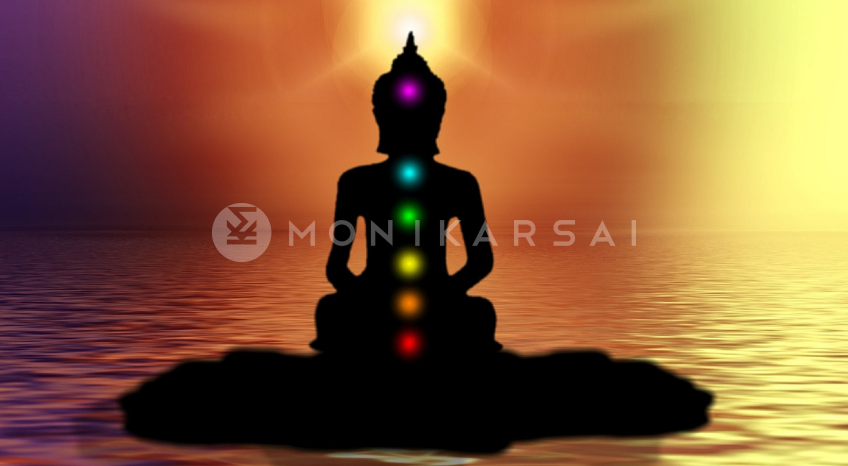The word ‘chakra’ is of Sanskrit origin. It translates to ‘wheel’ or ‘disk.’ It is the energy center of the body, and it controls the flow of that same energy.
We have 7 main chakras accompanied by 18 minor chakras with their corresponding 70 000 meridians. From an anatomical point of view, the location of the main chakras coincides with the endocrine glands. They contribute to our everyday well-being, and they play an important role in Indian Ayurveda and yoga, too.
What are the Chakras exactly?
According to Hindu philosophy, chakras form a complex system. The malfunction of a chakra will affect the rest and will lead to an imbalance. Chakras are links between the invisible energy fields surrounding our bodies. Humans have 7 main chakras connected by nadis, the energy channels that run along the spine. This is the place where the vital life force (Prana or Chi) flows.
In a healthy body, energy flows clockwise in these energy centers. In the case of an imbalance, the flow might be blocked and lead to stagnation. This will show in the corresponding area of our life and in our health, too. Chakra malfunction will result in a blockage in the flow of energy, which will cause illness and emotional problems. We should cleanse and balance out our chakras regularly to stay healthy.
The state of our chakras and our overall energy level can be enhanced by specific yoga asanas, thai massage, Chi kung, or meditation. During this mediation, we should use chakra-specific mantras and visualize chakra-specific colors. We can also turn to chakra-specific music, sounds, frequencies, symbols, stones, essential oils, herbs, flavors, or diet.
The system created by chakras is responsible for the continuous and energy-efficient management of the vital life force. Blocked energy flows slow down the chakras, and the energy starts to stagnate or the flow stops.
In the case of a temporary blockage, the energy will soon get back to its regular motion. However, in the case of a more permanent blockage, we need to stimulate our chakras to regularise their flow… you can check the short cleansing and energizing meditation I have uploaded. I practice every morning, and it definitely works!
Thai massage can have a positive effect on nadis, the energy channels. The nadis Ida, Pingala, Sushumna, are crucial for the treatment of spinal disorders. The event “Clinical application of Thai massage and yoga in the treatment of spinal disorders” dealt with this topic in the summer of 2017.
Chakras might seem mystical in the Western world, but their existence is widely accepted by Eastern medicine.
The history
The history of the chakras goes back a long time. The first descriptions can already be found in the Upanishads. The oldest surviving written records were born between 1200-900 BC. The concept of chakras is linked to the wisdom and practice of yoga. The philosophical system and practice of yoga were developed to subject the mortal self to a pure consciousness of a divine nature. The origin of yoga and the first mention of the chakras go all the way back to the Vedas. The Vedas are the scriptures of Hinduism. Their language is Sanskrit, perhaps the oldest language in the world. The word Veda means “doctrine, knowledge, wisdom.” The Vedas; a kind of anthem collection, the oldest surviving written work in India.
The later work of the Vedas, the Upanishads, contains wise teachings and philosophical dissertations. They are transported from master to disciple. The Yoga Uranus (i.e., around 600) references the chakras as the psychic centers of consciousness, as Patanjali’s Yoga-Sutras later (around 200) was published. From this tradition comes the classic eightfold path of yoga.
Chakra Relations
“Apart from Hindu literature, many metaphysical systems have already outlined the seven levels of man, nature, or physical existence. Theosophists, for example, speak of the seven cosmic rays of creation and the seven evolutionary races.
In the seven days of creation, Christians believe the seven sacraments, the seven seals, the seven angels, the seven virtues, and the seven mortal sins.
The Kabbalistic Tree of Life, which is also a system for studying behavior and consciousness, distinguishes seven horizontal levels.
Severeness can also be found outside the world of myth and religion. The rainbow is made up of seven colors, Western music is made up of seven degrees, the week 0is made up of seven days, and many believe that larger life cycles span seven years: from birth to birth to seven, adolescence from fourteen to twenty-one, and then in adulthood.
The main group of the periodic table also consists of seven periods, b.C. Horizontal rows.
The moon orbits the earth in 28 days.
Several cultures contain references to chakra-like energy centers or levels of consciousness. The Chinese, Hopi Indians, and Tibetans also believe that there are such in the human body.
There can be little doubt that there is a fundamental key that opens the door to understanding the connection between the above myths and data. Somewhere hidden is a cosmic map that shows the way for adventurers of consciousness.”
(Source: Judit Anodea: The Wisdom of the Chakras)
Briefly about the 7 main Chakras
Each main chakra has its own symbol and is dominated by a different element. Each chakra regulates different physical and psychic functions.
Muladhara – Root Chakra
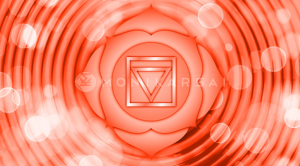
The first center, the Root Chakra, has a primary force that radiates through four spokes, a symbol of the four-petalled red lotus. It is located at the base of the Muladhara chakra ridge.
The first chakra’s main function, the root chakra, called Muladhara in India, is grounding. It is the foundation of the body, the center of connection to the physical world. This means that we live in our body, love it, and acknowledge its needs. It is essential to be able to take root. The root chakra is located at the tailbone and sacrum, at the lower end of the spine.
Color: bright ruby red, fiery red.
Psychological function: Survival.
Swadisthana – Sacral Chakra
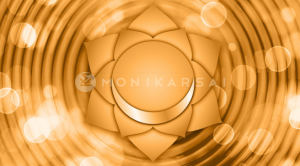
Swadishhana – Sex Chakra. It is found in the genitals, the symbol of the six-petalled white lotus, with the rising moon inside.
The second chakra, the Sacral or Indian name Swadisthana chakra, is usually located in the lower abdomen. This Chakra is responsible for sexuality, pleasure, and the sense of well-being. If this chakra works well, our sexual and creative energies work well and flow properly.
Color: bright orange.
Psychological function: Desire.
Manipura – Solar Plexus Chakra
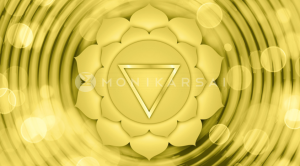
Manipura – Solar Plexus or Navel Chakra. It has a place at the navel. Its symbol is the ten-petalled yellow lotus, with a triangle set on one of its tips inside.
The third is the Solar Plexus, Umbilical, or Abdominal Chakra, known in India as Manipura. It literally means “The City of Jewels.” Located in the upper abdomen, around the navel. Represents the personal powers and strength. This chakra is associated with fiery energies. It’s about passions, anger, and the processing of feelings. The Solar Plexus Chakra is associated with the concept of movement, change.
Color: bright lemon yellow.
Psychological function: Will/ volition.
Anahata – Heart Chakra
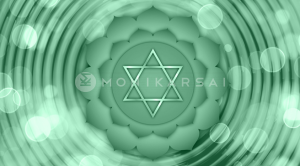
Anahata – Heart Chakra. It is located around the heart. It is symbolized by a green flower with twelve petals, with two intersecting triangles (hexagram) inside, symbolizing man and woman’s union.
The heart chakra, or Anahata in Indian name, is located in the center of the chest, at the heart’s height. The heart chakra is a bridge between the world of matter and the spirit. This chakra has a powerful influence on your relationships, personal as well as professional. This chakra also rules your emotions. Attached to it is unconditional love, in the spirit of which we accept others and ourselves.
Its color is: green.
Psychic function: Love.
Vishuddha – Throat Chakra
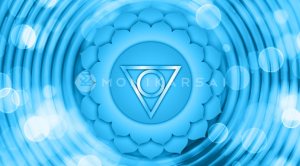
Visuddha – Throat Chakra. Its place is at the throat — the symbol of the sixteen-petalled blue or turquoise lotus, inside a silver crescent white circle.
The Throat Chakra, or Vishuddha, is located in the area of the throat. The main themes of the throat chakra are self-expression, artistic talents, and communication. One of the throat chakra’s main practices is listening, as we can only communicate honestly if we listen to ourselves and others, for which we need silence.
The color is: sky blue.
Psychic function: Communication.
Ajna – Third Eye Chakra
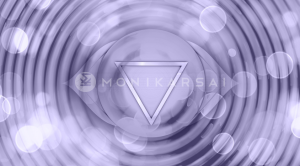
Ajnya – Forehead Chakra. It has a place on the forehead, between the eyebrows. It is also called the third eye. There are also two smaller chakras here, soma and manas. Its symbol is the purple, indigo blue, or blue two-petalled lotus.
The Forehead Chakra, or Third Eye Chakra, Indian called Ajna, is located between your eyes. The Third Eye is the organ of intuition and the sixth sense. This chakra is also known as the center of knowledge and symbolizes your ability for reasoning, logic, and wisdom.
Color: violet, purple, indigo.
Psychic Function: Intuition.
Sahasrara – Crown Chakra
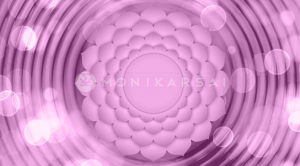
Sahasra – Crown Chakra or Lotus Chakra. It has a place on the roof. This chakra is usually the last to wake up. Due to the special role of some systems, they are not classified as standard chakras. Hindu works describe it as a thousand petals. Its symbol is the “thousand-petalled lotus.”
The Crown Chakra or Sahasrara is located on the top of the head. It is believed to be the point of your spirituality, your ability to connect to the Universe, and also it is known as a Chakra of light or illumination.
The colors are gold and white.
Psychic Function: Wisdom.
